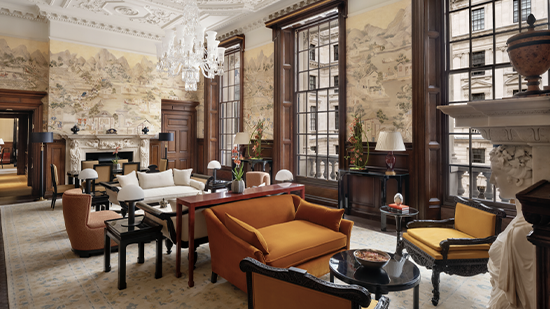
The living room of the two-bedroom Raffles Suite
at the soon-to-open Raffles London at the OWO
Source: Raffles London at the OWO
The Old War Office is one of the most important
historical buildings in modern London: It was a
base for British military operations throughout
both world wars, and plans for D-Day and the
Battle of the Bulge were reviewed inside the halls
of the Edwardian baroque building. Winston
Churchill, T. E. Lawrence and other historical
heavyweights worked from its chambers.
This month, after a seven-year, £1.4 billion
($1.76 billion) renovation, the building will
reopen on Sept. 29 as the five-star luxury hotel
Raffles London at the OWO, with 120 rooms and
suites. There will be 85 private residences, nine
restaurants—including an outpost of the buzzy
Parisian restaurant Cafe Lapérouse—and three bars
The property is the most anticipated London hotel
opening of the year, even amid a luxury boom in
London. Upscale brands such as the Peninsula,
Mandarin Oriental and 1 Hotels are opening
properties, alongside boutique hotels like One
Sloane, the Broadwick and Chelsea Townhouse. But
Raffles London at the OWO is generating the most
buzz because of its landmark location and the
scope of the renovation.
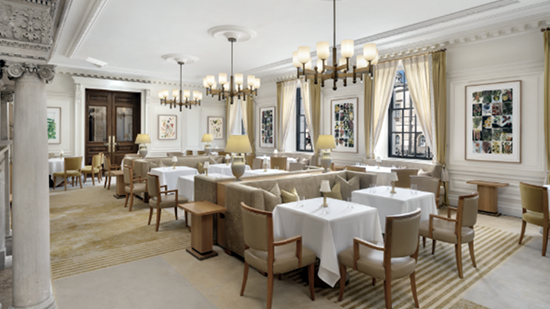
Mauro Colagreco at Raffles London at the OWO, one
of the new restaurants opening soon. Source:
London at the OWO.
Many London hotels are in historic areas and have
royal connections, but the OWO is a unique
reminder of British imperial splendor: The land
was once the site of the largest palace in Europe;
it’s the former home of MI6 and the birthplace of
James Bond. The British government commissioned
the building to centralize the offices for top
army brass and secretaries of state for war.
Construction was finished in 1906.
The buildings around the hotel’s Whitehall
neighborhood are mostly used as government and
civil-service offices. No. 10 Downing Street, home
of the prime minister, is a four-minute walk away,
while the underground bunkers known as the
Churchill War Rooms are nearby. The hotel is so
well situated among the top London tourist spots,
it will be a draw for non-guests, who can pop for
in coffee or cocktail with a view of the changing
of the Horse Guards opposite the hotel.
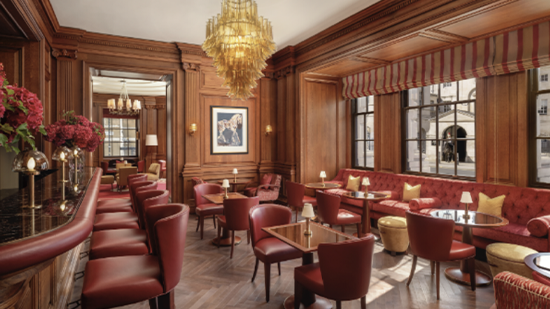
Customers in the Guards Bar and Lounge can watch
the famous Horse Gaurds. Source: Raffles London at
the OWO.
“It’s almost embarrassing for a Frenchman to be in
charge of this place,” Managing Director Philippe
Leboeuf says.
The features that make the hotel unique include
black marble in some of the guest bathrooms, a
gold French clock overlooking the grand staircase,
elevators that wouldn’t look out of place on the
Titanic and a 27,000- square-foot spa.
The Ministry of Defense sold the site to Hinduja
Group and OHL Developments for £350 million in
2016— technically a 250-year lease. The family-run
group headquartered in Mumbai formed a partnership
with Raffles to develop the site. Raffles will
manage the hotel.

A junior suite at the Raffles London has views
over historic Whitehall. Source: Raffles London at
the OWO.
Room rates start at around £1,100 a night for a
standard room. But Leboeuf says for £25,000 a
night, guests can stay in one of the showpiece
heritage suites, including one that used to be the
Churchill’s office, with a replica of his desk in
its old spot. Another suite features a gleaming
wooden table in the same room where the Army
Council used to meet during the world wars.
Companies can rent it by the day for meetings.
As to who he’s expecting for guests, Leboeuf says
he’s had a lot of interest so far from Americans,
who he calls fond of British history. He’s also
seen interest from Australians, members of the
Commonwealth
There are stories of underground tunnels beneath
the Old War Office that lead to other governmental
locations. Leboeuf says they’ve been boarded
up—and that their existence was “classified.”
(These hidden tunnels in London are an open
secret. Investigative journalist Duncan Campbell
explored the deep network of passages below
Whitehall in 1980.)
What he can confirm is that there are homages to
British spycraft in the hotel, including the Spy
Bar in the basement. “It’s in the part of the
hotel that used to be the bunker, so it’s a bit of
a speakeasy,” says Leboeuf, who says intelligence
officers may have shared a bottle or two in the
same part of the building to celebrate a
successful mission.
British intelligence agencies MI5 and MI6 both
have ties to the Old War Office. There’s a side
entrance on Whitehall known as the “spies
entrance” where operatives would enter the
building to receive orders and messages. Fictional
spies came to life here too. While roaming the
busy corridors, a British Naval Intelligence
Service officer named Ian Fleming conceived the
idea for James Bond. Several Bond films, including
Octopussy (1983) and Skyfall (2012), filmed scenes
there. And one of the hotel’s suites is named
after Christine Granville, Churchill’s favorite
spy during World War II.
The interior design was one of the final projects
of famed designer Thierry Despont, who died last
month. “He wasn’t the typical Frenchman,” says
Leboeuf of the late architect. “He had the joie de
vivre, but he was not narrow-minded at all, and I
loved working with him.”

The Guerlain Ateller with views toward historic
Banqueting House Source: Raffles London at the
OWO.
There are nods to heritage throughout the
building, such as lush red hallway curtains with
military button patterns reminiscent of the Horse
Guard uniforms worn by officers across the street.
Some suites incorporate meticulously restored
antique fireplaces, moved from early 1900s offices
on Pall Mall that were used by the likes of Earl
Kitchener, famous for the “Your Country Needs You”
poster campaign. Some former mail rooms have been
incorporated as home offices in the residence
portion of the building.
Despite all this, you don’t feel as if you’re
walking into a museum. Instead, it feels as though
a bit of history has been delicately brought to
life in the 21st century.
Here are more historical facts about the Old War
Office.
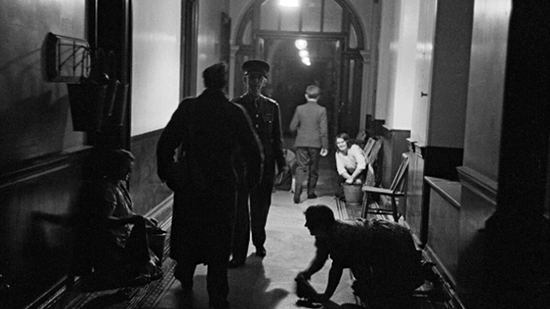
Early morning at the War Office in Whitehall in
December 1940. Photographer: Bert Hardy/Picture
poster
A royal residence
The OWO was built on the site of the Palace of
Whitehall, a Tudor and Stuart palace that was once
the largest in Europe. Henry VIII died there in
January, 1547. It was the monarch’s main residence
for much of the 16th and 17th centuries. The
palace burned down in 1698, when a worker
accidentally set linens on fire.
The grand staircase wasn’t for everyone
The grand marble staircase at the hotel entrance
leads to the second floor. When the building was
an office, only those with high rank could use it.
Everyone else—spies, secretaries, messengers—had
to take the backstairs. Leboeuf says he recently
met a police officer who’d worked security at the
Old War Office but never walked up the staircase
until he visited the new hotel.

Early morning at the War Office in Whitehall in
December 1940. Photographer: Bert Hardy/Picture
poster.
The Blitz years
During World War II, staff members would work
nonstop—except to duck below ground during bombing
raids, according to a history pamphlet written for
the Ministry of Defense. Shelters doubled as night
canteens. One person was killed when the building
was hit in 1940, causing some damage.
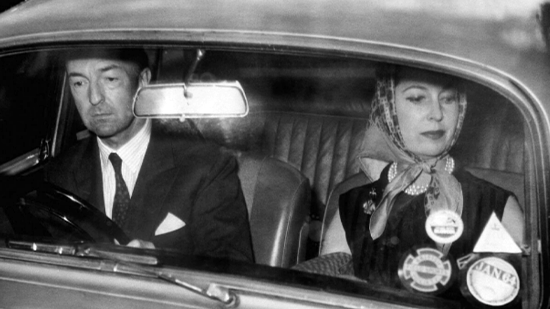
John Profumo, who was Britain's minister of war,
with his wife, Valerie Hobson, in 1963
Photographer: Bettmann/Bettmann.
The Profumo affair
Although civilians weren’t supposed to visit the
War Office, British politician John Profumo showed
19-year-old model Christine Keeler around his
grand wood-paneled office during their affair when
he was minister of war. Profumo’s affair was one
of the biggest scandals in modern British history,
setting off security worries because Keeler was
also been involved with a Soviet naval attaché.
The fallout from the affair brought down the
Conservative government
Courtesy: Bloomberg
|
